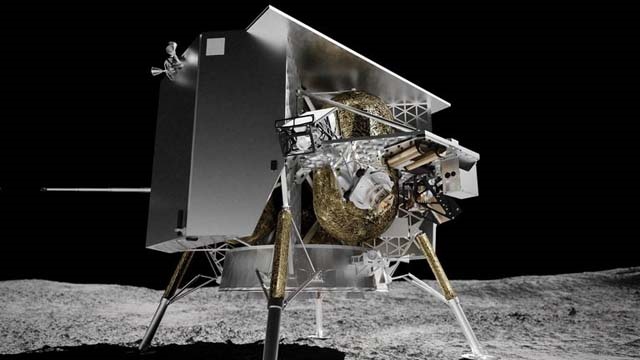A US private company has successfully landed its spacecraft on the Moon, marking the second-ever private lunar landing and the first to touch down in an upright position.
Firefly Aerospace’s Blue Ghost Mission 1 made a smooth landing near Mons Latreille in Mare Crisium at 3:34 AM US Eastern Time (0834 GMT) on Sunday, sparking celebrations at the mission control center in Austin, Texas.
“Y’all stuck the landing, we’re on the Moon!” an engineer announced as cheers erupted. Firefly’s CEO, Jason Kim, confirmed the spacecraft was stable and upright—a stark contrast to the previous private lunar landing in February, which tipped over upon touchdown.
Nicknamed “Ghost Riders in the Sky,” the mission is part of a NASA-led initiative to cut costs and support the Artemis program, which aims to return astronauts to the Moon.
A Journey of 2.8 Million Miles
The golden-hued lander, roughly the size of a hippopotamus, launched aboard a SpaceX Falcon 9 rocket on January 15, traveling 2.8 million miles before reaching the Moon. Along the way, it captured breathtaking images of Earth and the lunar surface.
Blue Ghost carries ten scientific instruments, including a lunar soil analyzer, a radiation-resistant computer, and an experiment testing whether global satellite navigation could be used on the Moon.
The spacecraft is designed to operate for 14 Earth days (one full lunar day) and is set to capture stunning high-definition imagery of a total solar eclipse on March 14, when Earth will block the Sun from the Moon’s horizon. On March 16, it will record a lunar sunset, offering new insights into how dust levitates above the surface—creating the mysterious lunar horizon glow first observed by Apollo astronaut Eugene Cernan.
The Race for the Moon Continues
Blue Ghost is part of NASA’s $2.6 billion Commercial Lunar Payload Services (CLPS) program, which aims to make private lunar missions routine. The mission also shared its launch with a Japanese lunar lander, set to attempt a landing in May.
Up next, another Texas-based company, Intuitive Machines, is preparing to land its Athena lander on March 6 at Mons Mouton—the southernmost lunar landing site ever attempted.
Intuitive Machines made history in February 2024 by becoming the first private company to achieve a soft lunar landing—and the first US Moon landing since Apollo 17 in 1972. However, that mission was cut short after the lander tipped over on impact, leaving it unable to generate enough solar power.
This time, the company has made significant design improvements. Athena, taller and slimmer than Blue Ghost, is roughly the height of an adult giraffe and will carry three rovers, a drill for ice detection, and a groundbreaking “hopping drone” to explore rugged lunar terrain.
NASA’s Lunar Ambitions in Question
Despite these achievements, NASA’s lunar ambitions face uncertainty amid speculation that the agency might scale back or even cancel the Artemis Moon program in favor of prioritizing a manned Mars mission—a goal long championed by SpaceX founder Elon Musk.
For now, private companies continue to push the boundaries of lunar exploration, proving that commercial spaceflight is becoming a major force in the new space race.

